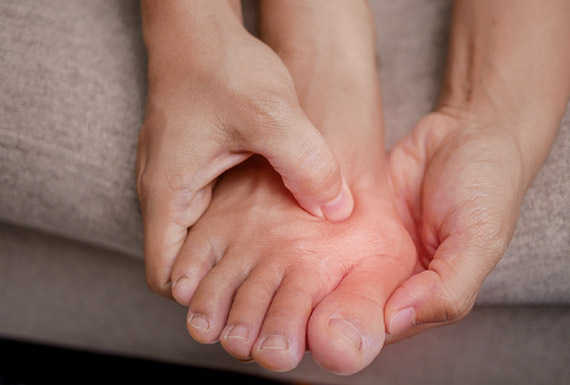Bunion and Bunionete
What is a Bunion?
A Bunion is a bony bump that forms on the inner side of the foot at the base of the big toe. The skin over the bony bump usually appears red. This condition is often referred to by its Latin name, hallux valgus. The bony bump is usually a manifestation of a change in the alignment and structure of the foot, with the big toe pointing outwards towards the 2nd toe.
If the bump occurs on the outside of the foot at the base of the little toe, the condition is called bunionette.
What is a Bunionette (Tailor's Bunion)?
If the bump occurs on the outside of the foot at the base of the little toe, the condition is called a bunionette, or a tailor’s bunion. Although a bunionette is not as common as a bunion, they have similar causes and symptoms.

What are the signs and symptoms of bunions?
- Hard bony swelling of the big toe joint
- Redness and pain around the big toe joint
- Corns or callus where the big toe rub against the 2nd toe and under the big toe and 2nd toe
- Crossing over/overlapping 2nd toe
- Stiffness of the big toe joint if condition is advanced with arthritis
How can I reduce the symptoms of bunions?
What are the causes of bunion?
What are the types of bunions?
Who is prone to getting bunions?
When should I see an orthopaedic doctor for bunions?
What will the doctor do when I see him to evaluate me for bunions?
What are the possible complications of bunions?
What are the treatment options available for me if I have a bunion?
What are the options for bunion surgery in Singapore?
How will my recovery after bunion surgery be?
FAQ on Bunions
At what age do bunions usually develop?
Bunions may develop at any age, but they commonly occur among adult women and adolescent girls aged 10 to 15.
Can the bunion come back after surgery?
While bunion surgery can definitively correct the deformity, it is still possible for the bunion to recur due to genetic predisposition and/or unaddressed biomechanical factors.
What happens if a bunion is left untreated?
If left untreated, the bunion usually worsens and becomes even more deformed and painful, which can significantly affect your mobility and choice of footwear. It can also increase the risk of other complications such as crossover toes.
How long does bunion surgery take?
Bunion surgery could take anywhere between 30 minutes to an hour depending on the severity of the bunion and what type of bunion surgery is performed.
Can you walk normally after bunion surgery?
In moderate cases, you may be allowed to bear weight on your feet immediately after the surgery, albeit with assistive devices such as a surgical boot, or crutches. However, in severe cases that require a more extensive surgery, patients may have to stay off their feet for up to around two weeks.
Is bunion surgery covered by insurance?
Generally, yes. Medisave and other private health insurance plans usually cover bunion surgery; however, this also depends on the severity of the bunion.
How much does bunion surgery or treatment cost in Singapore?
The cost of bunion surgery and bunion treatments in Singapore can range from a few hundred to a few thousand dollars. This depends on several factors, such as whether you opt for the procedure at a public or private hospital, your insurance coverage, doctor’s fee, facility fee, type of surgery, and so on.
Website maintained by Activa Media. All rights reserved. |
Blog




